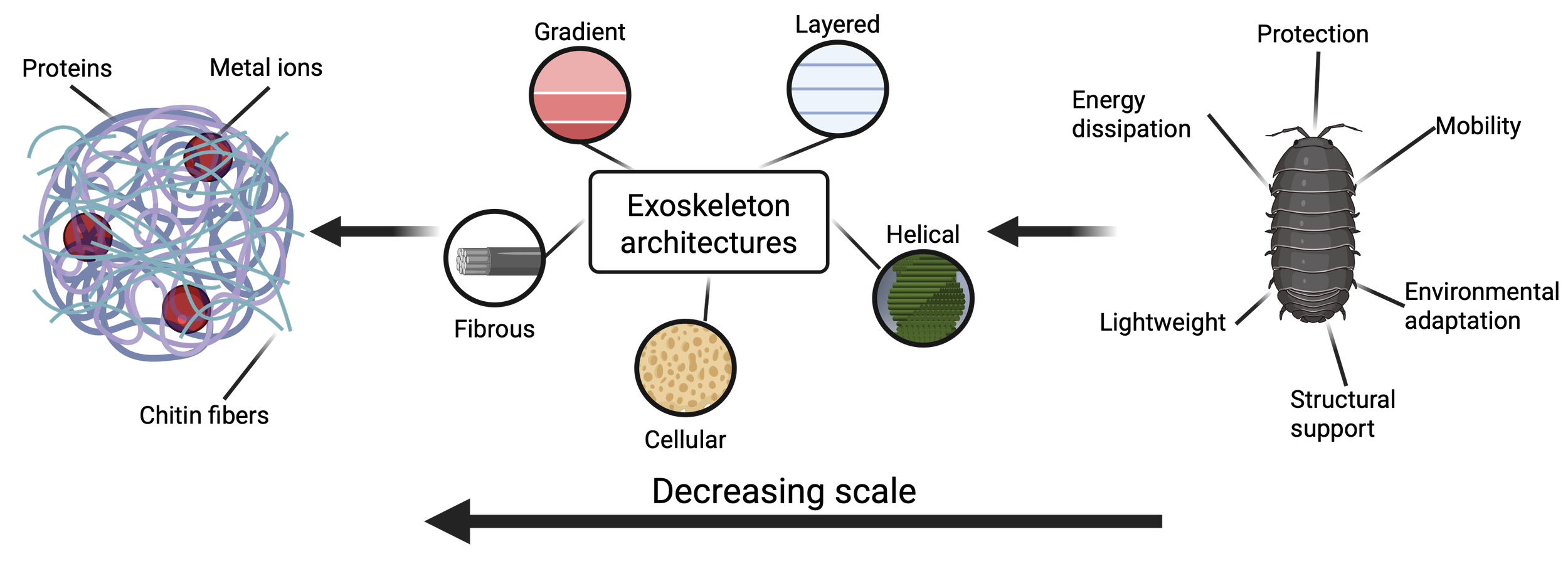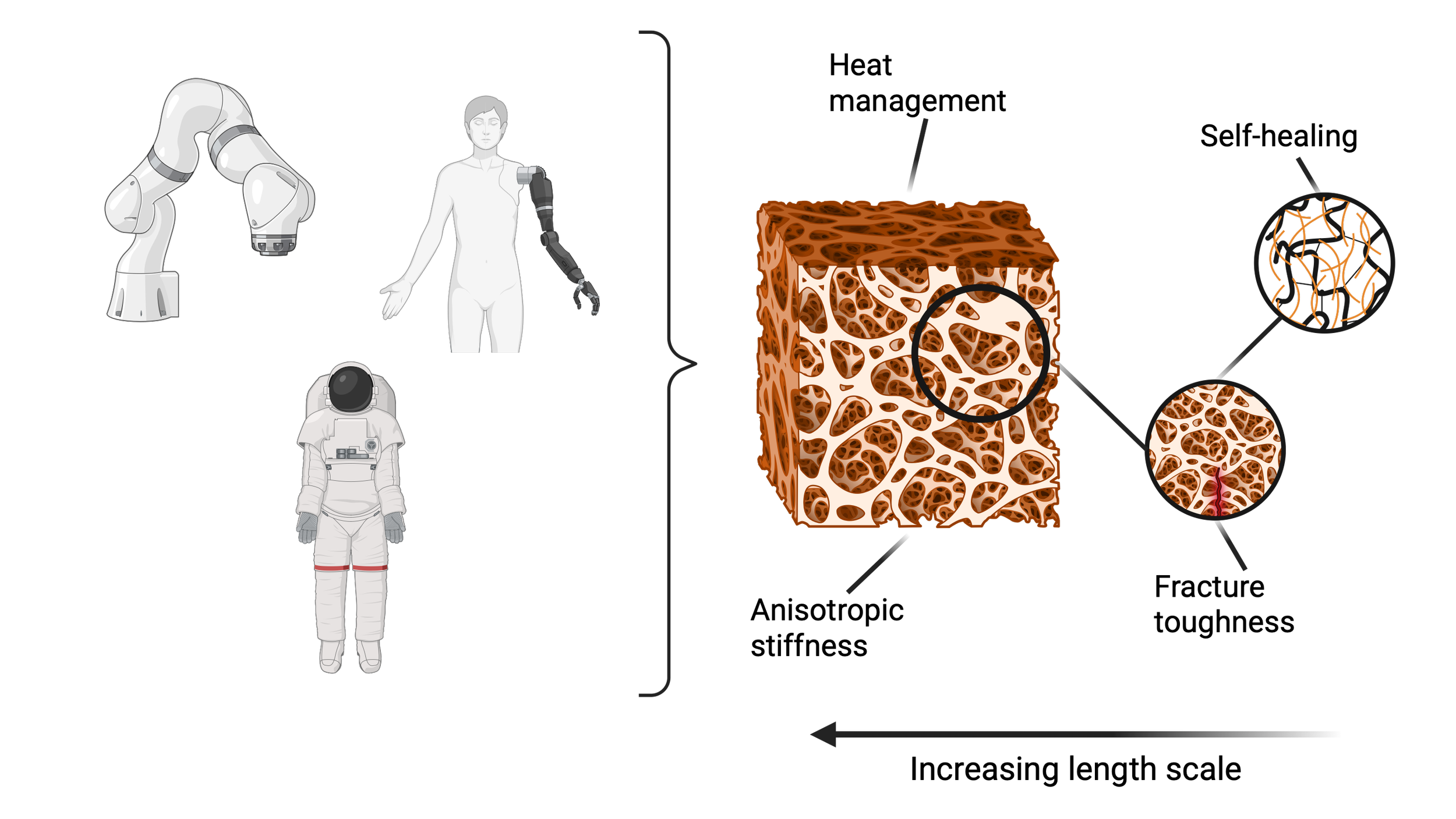Research
Structure-Function Relationships in Biological Exoskeletons
Arthropod exoskeletons achieve exceptional combinations of strength, toughness, and adaptability. While hierarchical organization, Bouligand architectures, and compliant interfaces are known contributors, the structural and chemical strategies that resolve trade-offs between stiffness and toughness across scales remain poorly understood.
We investigate how structure and composition interact to govern mechanical behavior in these biological systems. We identify how architecture and chemistry contribute to damage resistance and mechanical efficiency by using multiscale mechanical testing, high-resolution imaging, and spectroscopy, among others.
To isolate and test these principles, we combine ex-vivo analysis of natural specimens with multiscale 3D printing of physical models. This integrated approach allows us to connect form and composition to function, advancing the understanding of biological toughening mechanisms and guiding the design of robust, bioinspired materials.
Illustration created with BioRender.com
Hierarchical Materials Through Additive Manufacturing
Biological materials achieve multifunctionality through hierarchical organization—combining architecture and composition across scales. Inspired by these systems, we use additive manufacturing as a bottom-up fabrication method to create material systems with precisely controlled multiscale structure.
Our work explores how print path design, material formulation, and geometric architecture interact to govern mechanical behavior and multifunctionality. We develop printable composites and design features such as helicoidal patterns and gradient interfaces to mimic and expand natural strategies.
To evaluate structure–property relationships, we integrate 3D printing with mechanical testing, rheology, and imaging techniques. This approach allows us to isolate the effects of architecture and chemistry on performance, enabling the understanding of fundamental principles for the design of robust design of robust, adaptive materials with structural efficiency.
Illustration created with BioRender.com
Sustainable and Living Materials Systems
Biological and bio-based materials offer unique opportunities for sustainable and adaptive material design. We investigate how composition, microstructure, and processing affect the mechanical and functional behavior of materials derived from biomass, including biopolymers, algae-based composites, and emerging living systems.
Our work focuses on understanding structure–property relationships in bio-based materials to enhance mechanical performance, biodegradability, and multifunctionality. We explore how molecular interactions, dehydration, and material geometry influence performance across scales.
To fabricate and evaluate these systems, we combine 3D printing with rheology, spectroscopy, microscopy, and thermal analysis. For structural living materials, we are developing printable platforms that integrate biological activity with material function. This line of research fundamentally expands the conceptual framework of bioinspired design, opening new avenues for understanding sustainable and dynamic material platforms.
Illustration created with BioRender.com


